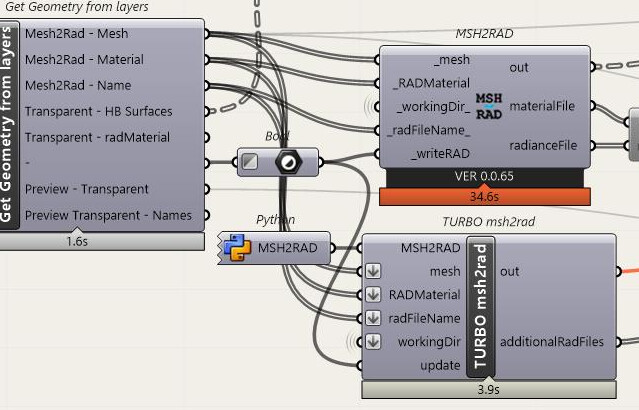In same thread,
the Shade components take 4 minuttes to run through 1.5M mesh faces. If the ambition is to fire large models through this bottle neck to pollination I would suggest someone looking into C#/Hops or atleast parallelizing the Mesh->Shade component.
I’m sort of reviving this thread I know, but still on large models parts of the legacy workflows feel more responsive (and most other parts are definately much better in LBT!)
but for instance me running a quickrender in this 1.5M poly model takes around 1-2 minuttes, because it’s converting hbjson to rad. So basically everytime i do something radiance related in this file, i’ll have a 2m+ delay. In the old workflow when first the rad files were written, i could do all my small quick renders etc without any lag in grasshopper.
I even did a parallel c# wrapper for the Msh2rad legacy component which gave a lot of speedup, take a look here GitHub - linkarkitektur/LINK_SHARE: Public IO repository with items shared with the rest of the world #Karma
